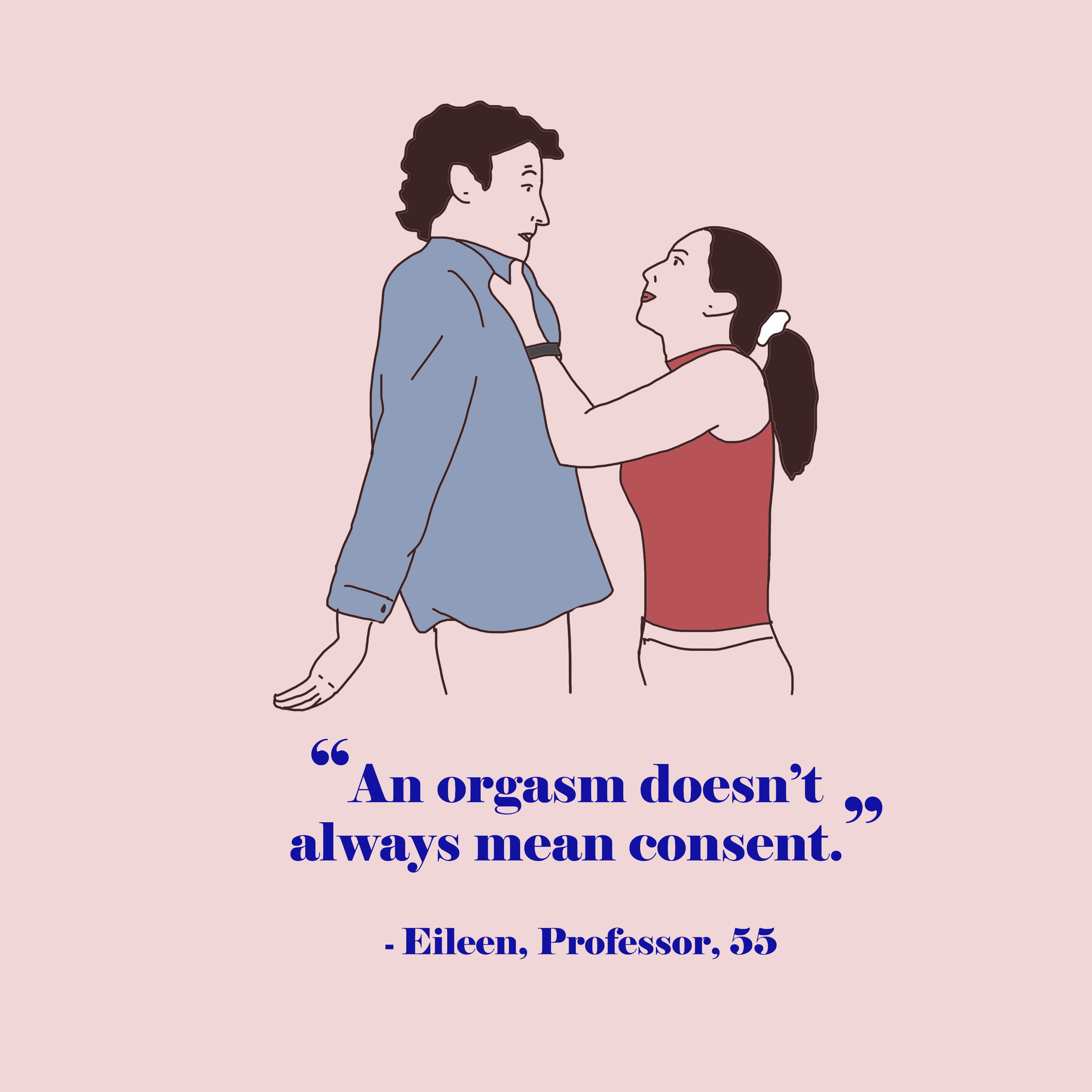What 100 heterosexual women revealed about achieving an orgasm in the bedroom
According to a recent study, 4 out of 5 women don't orgasm during heterosexual sex — for reasons known — unknown.

Illustration of a women sprawled out on a sofa
You have heard about the gender pay gap, but have you heard of the orgasm gap? Women are not only paid less but also orgasm much less than men.
According to a study by the Journal of Sex & Marital Therapy — 4 out of 5 women don't orgasm during heterosexual sex — for reasons known — unknown. This disparity is called the "Pleasure Gap" or the "Orgasm Gap." From the kitchen to the board-room, women have come a long way, then why does a gap exist in the bedroom?
To get to the bottom of this, I created Nogasms, an investigative project aimed to bring forth barriers that inhibit women from having an orgasm. I present to you insights gathered from medicine, psychology, culture, and real women — and their orgasms or lack thereof.
1. Women take longer to get there

Women, on average, take thrice as long to get turned on than men and need extended foreplay to have an orgasm of any kind. This is why, in a 'hookup' or a 'quicky' situation, women rarely orgasm and usually fake one. There is just not enough time for women to reach from zero to turned on if you give her just a 10-minute window.
But most individuals neither understand nor acknowledge this difference. Usually, the activity ends once the man orgasms, which is funny cause there are two people involved.
2. The clito-what?

A clitoris is to a woman what a penis is to a man. The more people accept and acknowledge that — the more orgasms women will have. But despite every second person having one, the poor clitoris has long lived in obscurity. It has been discovered and rediscovered by scientists for centuries, but no proper diagram ever existed.
Until very recently, even the information about it in textbooks was incorrect or misleading. A full 3D image of the clitoris could only be mapped by researchers as late as 2009!
The ill-cliteracy is just not cute anymore. Finding the clitoris has become an achievement, and finders are keepers.
Watch this cute animated short "Le Clitoris" for some 101. Follow the work of artist @sophiawallaceartist #cliteracy project and learn more about the female anatomy!
3. They are embarrassed to ask for one

Several women have expressed that they feel asking for an orgasm is obnoxious and will kill the mood, meaning the man's mood. This stems from the belief that women do not deserve the same sexual experience as men, and this stems from years of negative conditioning about sex as being only pleasurable for men.
Women are not taught to want it, let alone enjoy it without being categorized as desperate.
4. Porn has set unrealistic expectations

Porn has set unreal expectations, not only for how women look during intercourse, but also how they sound. Real women are not always turned on and loud, and their vaginas are not white or pink and touched up with foundation. This causes anxiety among women who think their partner wants or expects them to live up to these manufactured standards, and begin to judge the appearance of their vagina.
How then can a woman orgasm while being physically intimate with a partner where instead of enjoying herself, she is preoccupied with being self-conscious?
5. We are taught sex = P in V

Women love sex. But women love different activities within sex, which has all been categorized as foreplay for some reason. We are taught that real sex only means penetration.
Nope.
Penetrative sex has one function — to help a man orgasm. Biologically the vagina is designed to help a man orgasm inside a woman so that she can get pregnant. A woman might feel aroused by penetrative sex, but her level of pleasure will most often never match that of a man's because her clitoris is not involved.
Heck, even most vibrators are designed to be inserted in the vagina, leaving the clitoris feeling as ignored as Kevin Jonas. Sex is defined as activities associated with sexual intercourse, which includes everything starting from kissing, dry humping, oral sex, massage, sex toys, etc.
You get the picture.
6. Guilt and self-hate after sexual abuse

One in every five women are victims of sexual abuse.
And sexual abuse has a devastating effect on how women view pleasure and sexuality. It's horrific, but a woman can orgasm without consent. An orgasm is an involuntary reflex to stimulation, much like heartbeat and digestion; it's not something you can control or suddenly stop in the middle.
In cases of abuse, an orgasm is misconstrued for consent, even confusing the victim. It is wrongly considered as enjoyment and is often used against the victim.
7. Assuming all women like the same things in bed

Popular culture and confused scientists have divided a woman's body into spots. C-spot, G-spot, A-spot, U-spot, P-spot, O-spot (other letters in the alphabet are yet to get appropriated). Giving the impression that these are magic buttons that will make every woman come.
Women are not remote-controlled. We are living beings with unique personalities, likes, and dislikes. Our thoughts are never the same, our body is one of a kind, then how can our path to pleasure be the same?
How women orgasm is unique to them, so one has to do the leg work of finding out what each woman likes.
For more insights into the female orgasm, follow Nogasms.
Let's make orgasms great again!


